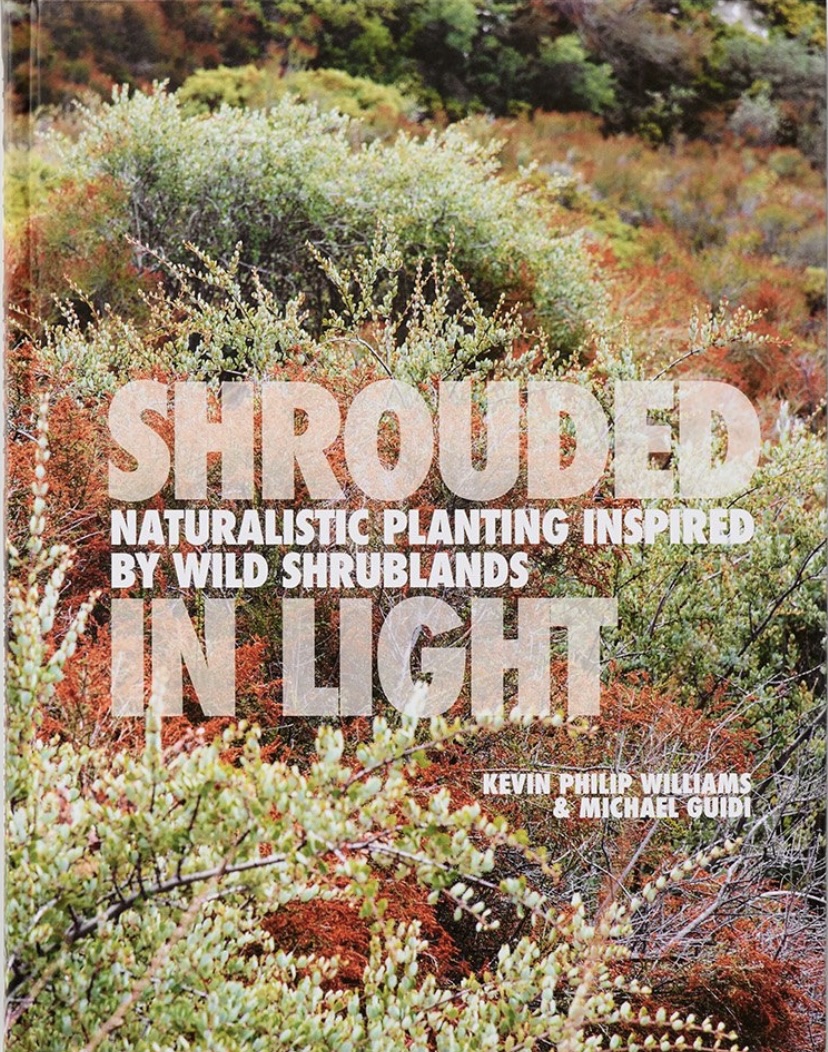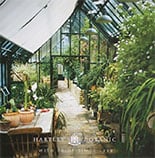As my garden in Colorado has matured, so have I, and the post-Christmas lull and polar vortex winter has given me thinking time, a chance to identify “improvements” in the aid of slow and low maintenance, and to read a book or five, including Shrouded in Light: Naturalistic Planting Inspired by Wild Shrublands, a book devoted to the wonderous textures, colors and fabric this plant group brings to a garden picture.
Written by Kevin Phillip Williams and Michael Guidi, the former an Assistant Curator and the later a Horticulturist, both at Denver Botanic Gardens, the duo drew their inspiration, as the subtitle says, from the wild. It was harder to nail down the significance of the title, which is the title of a landscape painting by Sean McNamara, a digital artist based in North Carolina. The painting illustrates nature bumping up against the manmade; organic vs inorganic, and that is pretty much what the authors are expressing in this generously sized (10in x 14in), 240 page, spectacularly illustrated book. Must hand it to the UK publishers, Filbert Press, who are producing important gardening books with great style.

The introduction, by Nigel Dunnett, the leading voice in the UK’s naturalistic garden movement, lays out the argument in defense of shrubs and their place in the ‘naturalistic’ landscape movement. This has been dominated by herbaceous perennials and grasses; shrubs have been underrated, dismissed as ‘scrub’ or as ‘brush’ – a nondescript vegetative cover beneath a tree canopy or simply filling the space where more desirable plants might grow… or not depending on conditions.
Digging into the book, Williams notes when he first encountered the “Great Sage Brush Sea”, which spans most of the Intermountain West and is the largest terrestrial ecosystem in the lower 48 states, “My mind melted”… “My veil was being shredded” A little hyperbolic, but I get it; that’s pretty much the same way I felt as I drove from Colorado Springs to Santa Fe through the San Luis valley.
This book, then, focuses down deep southwest’s shrublands, an integral part of what is one of the earth’s four steppe regions. Yet, even if you live and garden outside a steppe region, this book is worth reading and referring to as your garden life evolves, as it must in these strenuous climate-change times, to take more account of the inter-connectivity of life on earth. The chapters devoted to learning about the ecodiversity of shrublands expands on this theme: Fruits is sub-sectioned into Global Weirdness, How Shrubs Exist, Leaves, moving onto a small photo album of Flowers, then Brush Beasts of shrublands from Tibet to the California coast, all making the point that shrubs shape the landscape pretty much everywhere you look… if you take the time to see. The inclusion of contemporary art — drawings, paintings, conceptual pieces — throughout the book supports the authors’ beliefs that, “Gardens are full of non-linguistic, representational communication that we use to create a dialogue with the non-human world.” Yes, we do. “…we garden indexically.” I had to look that one up; the text does stop one every so often, pausing to puzzle over what exactly the author is getting at: Creating landscapes/gardens that include shrubs, they write, “We use the shrub as an icon, an emoji worth a thousand words.” Ummm… okay.

Part 2, ‘Seeing Shrublands’, looks at “Model” and “Alternative Shrublands” that shape the earth’s natural landscape, and from which lessons learned can be applied in the home garden. Part 3: ‘Making Shrubscapes’, puts this info to work, and is the practical heart of the book, where the author’s caution that, “Replicating a natural landscape is impossible and will not produce a garden with a satisfying or feasible future.” What we can do is study as we would a painting (yes, gardening is an art) the composition, textures, colors and forms of the natural landscape and translate it into something that is recognizable as a garden.
This wouldn’t be a contemporary garden design book if it didn’t include a number of inspirational “Cyberpunk Shrubscapes”. These are scattered throughout a region called “Cyberspace” and were designed by AI. It really does tempt me to have a go with this newfangled technology, and to enter a design criterion and hit “prompt://” to see just where I end up. I might snag a few prompts from this book, like “a hardcore punk shrubland garden.exe.” Or…a low maintenance, eco-friendly, colorful garden of shrubs in front range of the Rocky Mountains.
Just imagine!! Prompt://
Ethne Clarke 2025
For more about Shrouded in Light, visit the publisher’s website at https://www.filbertpress.com/our-books/shrouded-in-light
To learn about the inter-mountain steppes of North America and what is being done to preserve their unique habitats, refer to the Sierra Club’s website, here.
The Denver Botanic Garden produced Steppes: the plants and ecology of world’s semi-arid regions in 2016; copies can be purchased at the Garden’s shop, or from online booksellers.


